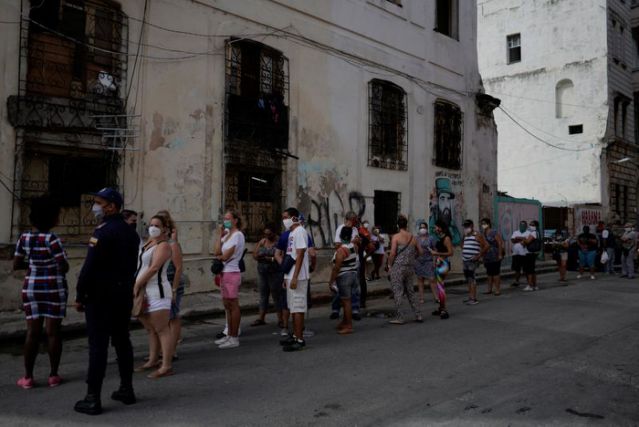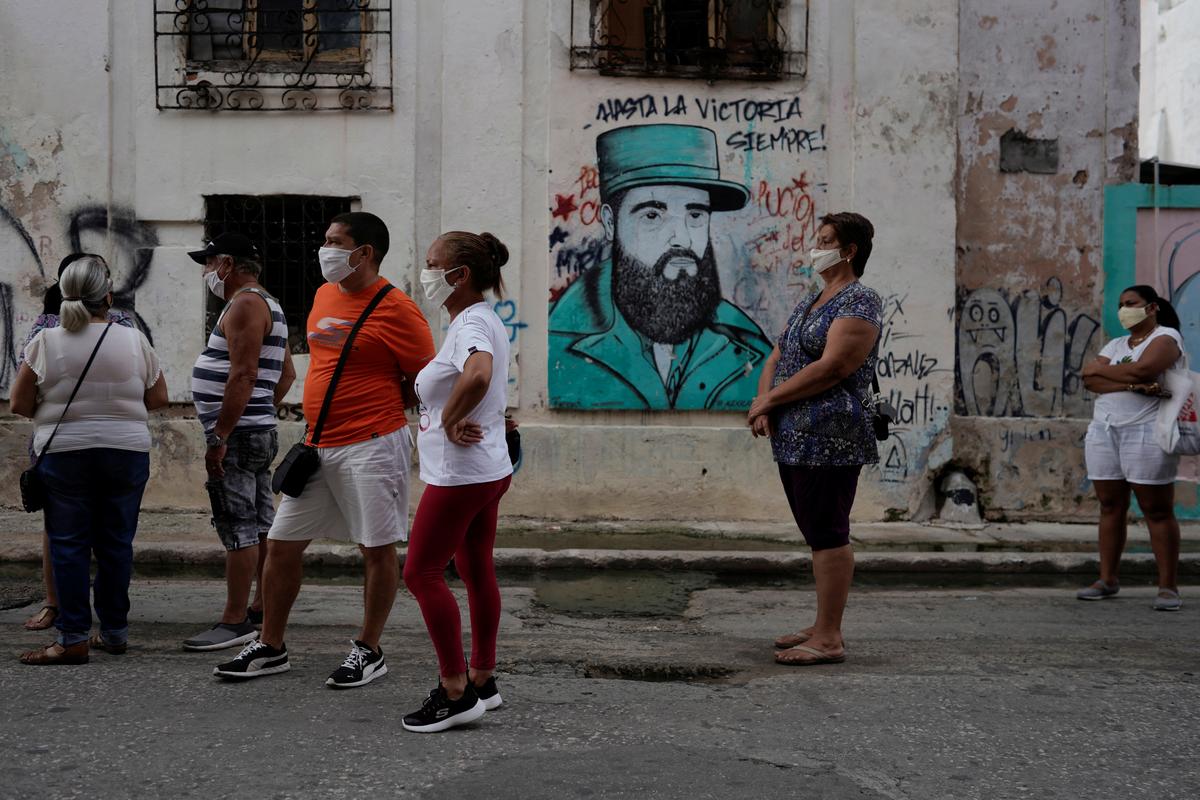HAVANA — State-run stores in Cuba began selling some food and hygiene products in U.S. dollars on Monday as the import-dependent country faces a grave shortage of tradable currency to purchase goods abroad.
Cuba last had to open such dollar stores for basic goods in the 1990s when the fall of the Soviet Union plunged the Communist-run island into a deep economic depression.
This time it is the coronavirus pandemic, which has shuttered tourism and hit other revenue earners, worsening an existing liquidity crisis due to the implosion of ally Venezuela’s economy and the tightening of U.S. sanctions on old foe Cuba.
Lines formed in front of the stores on Monday and Cubans packed banks to obtain the bank card needed to purchase dollar goods although most residents resigned themselves to obtaining the basics in local currency.
“Not all Cubans can buy there, we don’t all have family abroad,” Lazara Rodriguez, 43, a dancer who lives near one of the stores, said.
The government said 62 stores were opening across the country with more to follow in the coming months.
Some 80 outlets selling domestic appliances, car parts and other items such as motorbikes opened late last year, and used cars went on sale for greenbacks earlier in 2020.
The Cuban state monopolizes retail and foreign trade but pandemic fallout has worsened shortages of food, medicine and other goods and there are long lines at retail outlets.
Consumers said the dollar stores provided an option amidst scarcity for some, but complained they still lacked many products.
“Its good, the prices are acceptable, but it does not have many products like detergent, oil and ham,” retiree Guillermo Antigua said, exiting a store in Havana.
Cuba is reopening with no new cases of COVID-19 reported on Monday, but private eateries with no access to wholesale markets have been finding it difficult to put together an offer.
The new stores are an option for some.
“This is good. We have options to keep working. At least they are selling us products,” cafeteria owner Daniel Gonzalez said as he packed cheese and other items into his car.
Cuba legalized the dollar after the fall of the Soviet Union but it was taken out of circulation in 2004.
Since then, there have been two currencies, the peso and the convertible peso, which is valued at 24 pesos, circulating although possession of the dollar and other tradable currencies remained legal.
Cubans who patronize the dollar stores need a dollar-denominated bank card from an account opened with tradable currencies which may be obtained through offshore remittances or other means such as exchanging local pesos on the street.

The government claims the convertible peso is equal to the dollar, but imported goods, when available, have huge mark-ups as they are purchased in tradable currencies. The peso and convertible peso have no value abroad.
“As in the 1990s, national currencies have lost their convertibility and do not allow companies to pay debts and import inputs,” Pavel Vidal, a former Cuban central bank economist who teaches at Colombia’s Universidad Javeriana Cali, said.
“To ensure that at least some sectors and markets work, they have to dollarize them.”
—REUTERS
Reporting by Marc Frank; Additional reporting by Sarah Marsh and Reuters television; Editing by Alistair Bell
Our Standards: The Thomson Reuters Trust Principles.

